It Takes Two to Tangle: An Entangled Ensemble of Electron-Nucleus Spin Pairs
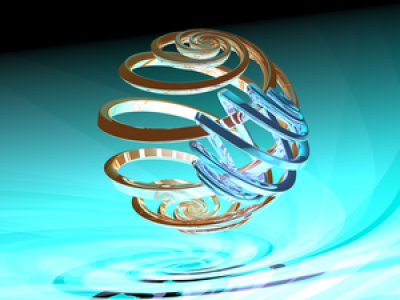
Ensembles of spins controlled using magnetic resonance have provided the first, most advanced, and highest fidelity experimental demonstrations of quantum algorithms to date, however they have until recently been unable to produce on-demand entanglement - the most critical ingredient for a pure-state quantum computer. Entanglement requires a high degree of polarisation, and to build upon the natural polarisation of electron-phosphorus donor pairs embedded in a high-purity Si-28 crystal at 2.9K and 3.4T, we performed a hyperpolarisation sequence to further reduce the spin entropy of the state. Once polarised, the entangled state was generated and its density matrix measured using quantum state tomography, which was then analysed for entanglement. Reading out the state resulted in a 98% fidelity with the target entangled state at this field and temperature.
Entanglement in a solid-state spin ensemble
Stephanie Simmons, Richard M. Brown, Helge Riemann, Nikolai V. Abrosimov, Peter Becker, Hans-Joachim Pohl, Mike L. W. Thewalt, Kohei M. Itoh & John J. L. Morton
Nature 470 49 (2011) Link
Bird's eyes are quantum!

How animals detect Earth's magnetic field has been a long standing mystery. In the case of the European Robins, the evidence now suggests that these birds are capable of harnessing quantum mechanics at a level that is beyond the best man-made systems. According to recent experimental results from Frankfurt the bird's chemical compass, thought to be located on the retina, is disrupted by extremely small levels of magnetic 'noise', i.e. a tiny oscillating magnetic field added artificially to the static geomagnetic field. While the radio frequency field does not hurt the bird, it completely disables their internal compass, and the compass sense only returns after the noise is switched off. A thorough theoretical analysis based on these results shows that the bird's compass must be using a coherent quantum states for sensing the field. It seems that the bird's compass can sustain these states for at least 100 microseconds if not much longer. This may sound like a short time, but the best comparable artificial molecules only achieve 80 microseconds at room temperature in ideal laboratory conditions. (Image of singing Robin © Ernst Vikne and reproduced under the terms of the Creative Commons Attribution-Share Alike 2.0 Generic license.)
Sustained Quantum Coherence and Entanglement in the Avian Compass
Erik M. Gauger, Elisabeth Rieper, John J. L. Morton, Simon C. Benjamin & Vlatko Vedral
Physical Review Letters 106 040503 (2011) Link
Coupling cavity photons and electron spin ensembles
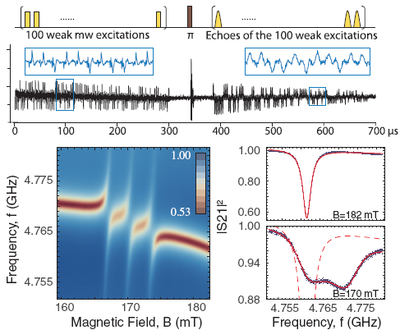
The hybrid model for a quantum computer benifits from the long decoherence time of electron spins for the storage of quantum states, as well as the strong coupling strength between Josephson devices and superconducting cavities for gate operations. We demonstrated the coherent storage of multiple microwave excitations in the collective states of a single electron spin ensemble using magnetic field gradients, similar to holographic encoding techniques. The stored coherences are then transferred to the nuclear spin for a much longer memory time. The coherent quantum state transfer between the electron spin ensemble and the superconducting cavity is possible only if the interaction between the two is strong enough. Schuster et al. demonstrated megahertz couplings of the electron spins in both ruby and the P1 centers in diamond to an on-chip superconducting cavity at powers corresponding to a single cavity photon. This coupling rate is much larger than the decoherence rates of the cavity and typical superconducting qubits.
Storage of Multiple Coherent Microwave Excitations in an Electron Spin Ensemble
Hua Wu, Richard E. George, Janus H. Wesenberg, Klaus Molmer, David I. Schuster, Robert J. Schoelkopf, Kohei M. Itoh, Arzhang Ardavan, John J. L. Morton, G. Andrew D. Briggs,
Phys Rev Lett 105 140503 (2010) Link
High-Cooperativity Coupling of Electron-Spin Ensembles to Superconducting Cavities
D. I. Schuster, A. P. Sears, E. Ginossar, L. DiCarlo, L. Frunzio, J. J. L. Morton, H. Wu, G. A. D. Briggs, B. B. Buckley, D. D. Awschalom, R. J. Schoelkopf,
Phys Rev Lett 105 140501 (2010) Link
Towards superconductor-spin ensemble hybrid quantum systems
Tim Duty,
Physics 3 80 (2010) Link
Quantum computing: Quantum RAM
Miles Blencowe,
Nature 468 44 (2010) Link
Memoirs of a silicon qubit: coherent storage beyond a second
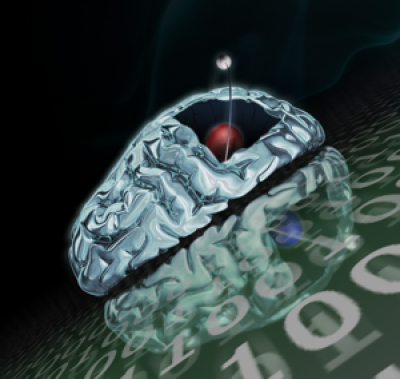
A powerful model for quantum computation is thus one in which electron spins are used for processing and readout while nuclear spins are used for storage. We have demonstrated the coherent transfer of a superposition state in an electron spin 'processing' qubit to a nuclear spin 'memory' qubit, using a combination of microwave and radiofrequency pulses applied to 31P donors in an isotopically pure 28Si crystal. The electron spin state can be stored in the nuclear spin on a timescale that is long compared with the electron decoherence time and then coherently transferred back to the electron spin, thus demonstrating the 31P nuclear spin as a solid-state quantum memory. The coherence lifetime of the quantum memory element is found to exceed one second at 5.5K.
Solid state quantum memory using the 31P nuclear spin
John J. L. Morton, Alexei M. Tyryshkin, Richard M. Brown, Shyam Shankar, Brendon W. Lovett, Arzhang Ardavan, Thomas Schenkel, Eugene E. Haller, Joel W. Ager, S. A. Lyon,
Nature (in press) (2008) Link
Bang-bang, thank you ma'am
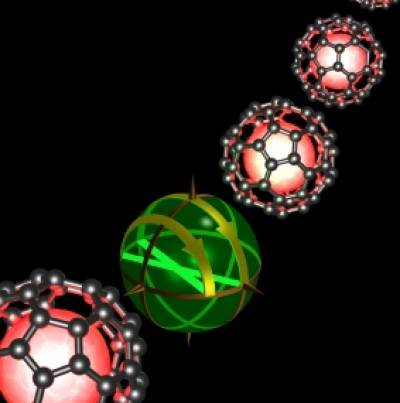
A fundamental challenge in all QIP technologies is the corruption of superposition in a quantum bit (qubit) through interaction with its environment. Quantum bang-bang control provides a solution by repeatedly applying 'kicks' to a qubit, thus disrupting an environmental interaction. However, the speed and precision required for the kick operations has presented an obstacle to experimental realization. Here we demonstrate a phase gate of unprecedented speed on a nuclear spin qubit in a fullerene molecule, and use it to bang-bang decouple the qubit from a strong environmental interaction. We can thus trap the qubit in closed cycles on the Bloch sphere, or lock it in a given state for an arbitrary period. Our procedure uses operations on a second qubit, an electron spin, in order to generate an arbitrary phase on the nuclear qubit. We anticipate the approach will be vital for QIP technologies, especially at the molecular scale where other strategies, such as electrode switching, are unfeasible.
Bang-bang control of fullerene qubits using ultra-fast phase gates
John J. L. Morton, Alexei M. Tyryshkin, Arzhang Ardavan, Simon C. Benjamin, Kyriakos Porfyrakis, S. A. Lyon ad G. Andrew D. Briggs
Nature Physics 2 40 (2006) Link
High-fidelity EPR
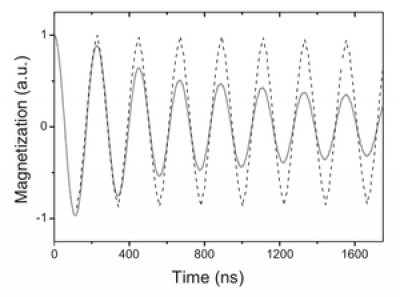
Systematic errors in spin rotation operations using simple rf pulses place severe limitations on the usefulness of the pulsed magnetic resonance methods in quantum computing applications. In particular, the fidelity of quantum logic operations performed on electron spin qubits falls well below the threshold for the application of quantum algorithms. Using three independent techniques, we demonstrate the use of composite pulses to improve this fidelity by several orders of magnitude. The observed high-fidelity operations are limited by pulse phase errors, but nevertheless fall within the limits required for the application of quantum error correction.
High fidelity single qubit operations using pulsed electron paramagnetic resonance
John J. L. Morton, Alexei M. Tyryshkin, Arzhang Ardavan, Kyriakos Porfyrakis, S. A. Lyon ad G. Andrew D. Briggs
Physical Review Letters 95 200501 (2005) Link
Measuring errors in single qubit rotations by pulsed electron paramagnetic resonance
John J. L. Morton, Alexei M. Tyryshkin, Arzhang Ardavan, Kyriakos Porfyrakis, S. A. Lyon ad G. Andrew D. Briggs
Physical Review A 71 012332 (2005) Link
 Close
Close

